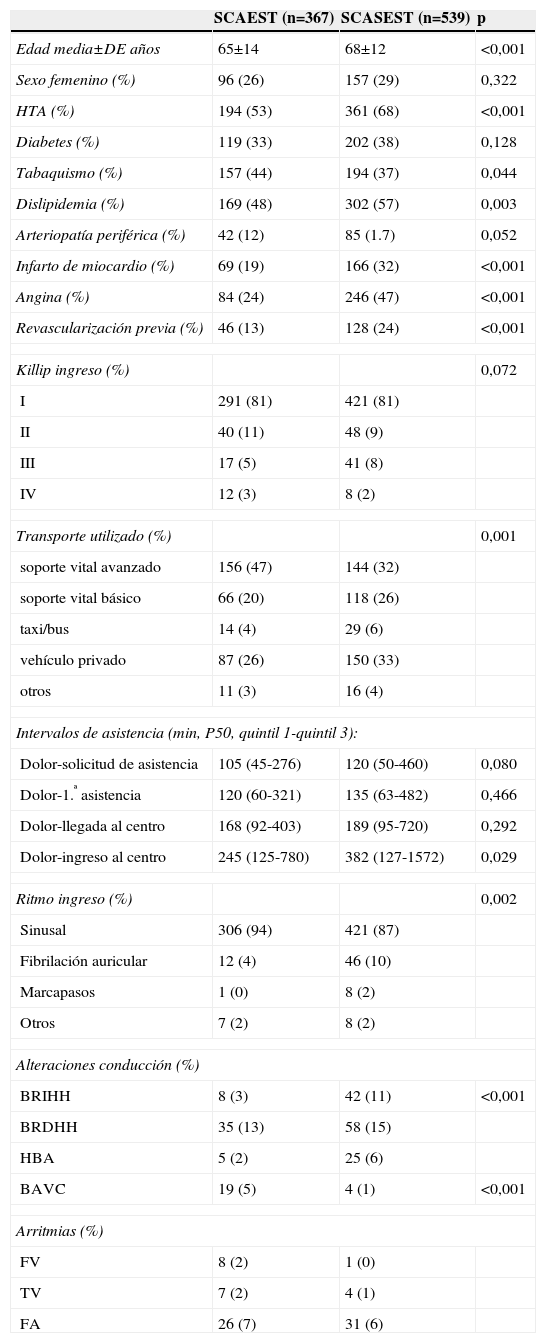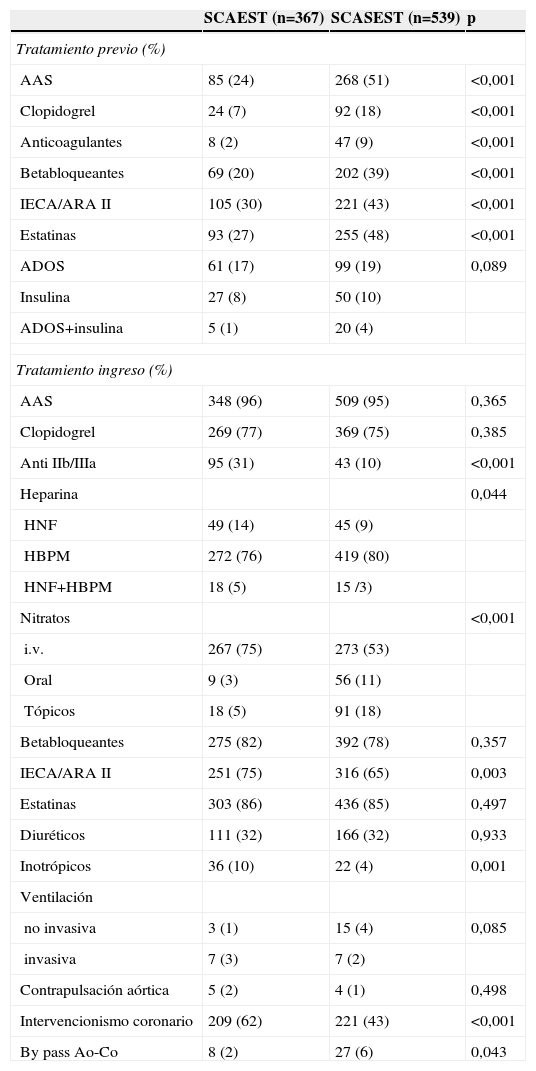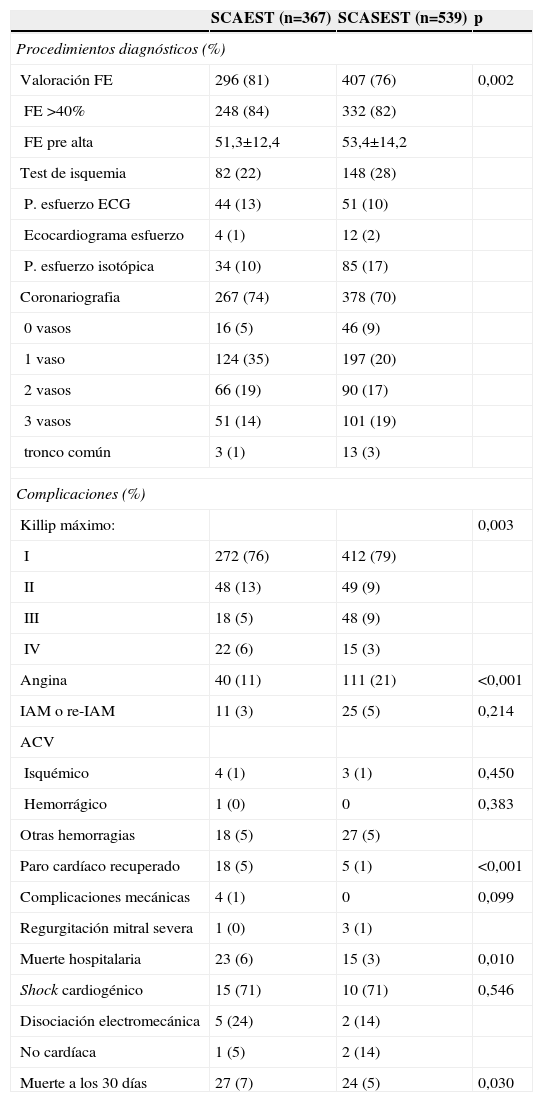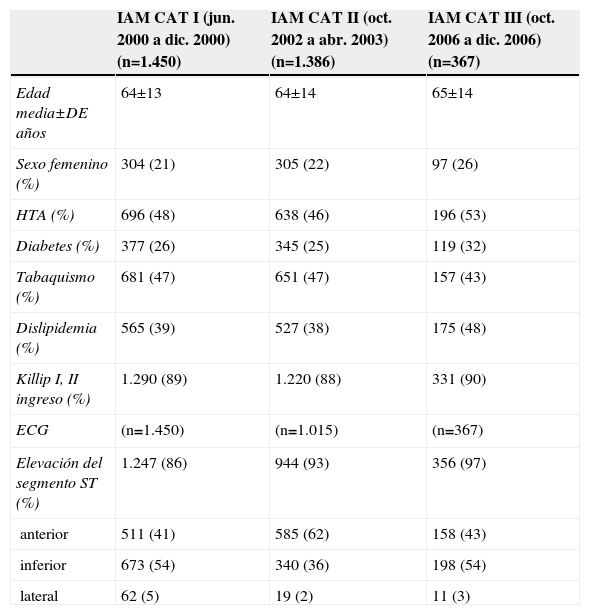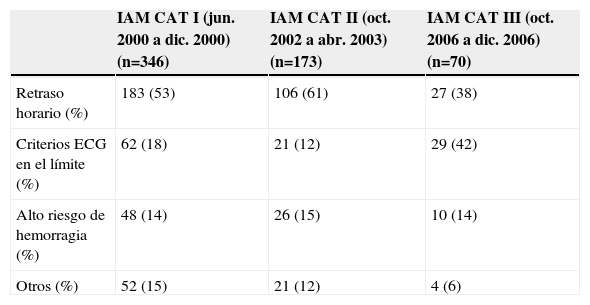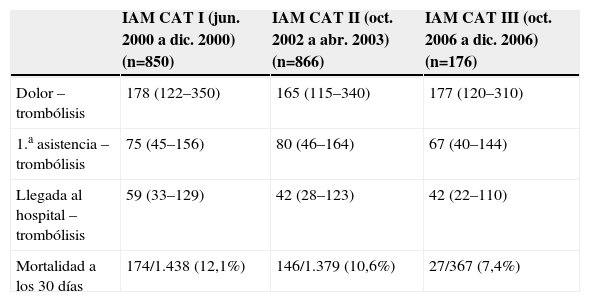Analizar el tratamiento de reperfusión en el infarto de miocardio (IAM) con elevación del segmento ST (IAMEST) en Cataluña en el registro realizado en el año 2006 (IAM CAT III) y su comparación con 2 registros previos.
Pacientes y métodoLa frecuencia del tratamiento de reperfusión y los intervalos inicio de síntomas-tratamiento fueron las variables fundamentales. El IAM CAT I (junio-diciembre de 2000) incluyó 1.450 pacientes; el IAM CAT II (octubre de 2002-abril de 2003), 1.386, y el IAM CAT III (octubre-diciembre de 2006), 367.
ResultadosLa proporción de pacientes tratados con reperfusión fue progresivamente mayor (el 72, el 79 y el 81%, respectivamente) con aumento también progresivo de la angioplastia primaria (el 5, el 10 y el 33%, respectivamente). En el III se utilizó más frecuentemente el SEM/061 como transporte (el 17, el 32 y el 47%, respectivamente), pero el intervalo inicio de síntomas-contacto con el sistema sanitario no mejoró (90min en el II y 105 en el III). El intervalo inicio de síntomas-tratamiento trombolítico apenas se modificó (178, 165 y 177min, respectivamente) y sí lo hizo, parcialmente, el tiempo entrada al hospital-trombólisis (“puerta-aguja”) (59, 42 y 42min, respectivamente). La mortalidad a los 30 días del IAMEST descendió en el III registro (el 12,1, el 10,6 y el 7,4%, respectivamente; p=0,012).
ConclusionesLa frecuencia de tratamiento de reperfusión en el IAMEST ha mejorado y es satisfactoria. Sin embargo, los intervalos de su aplicación apenas se han reducido. Para esto es preciso una notificación más precoz al sistema sanitario y una reducción de los tiempos “puerta-aguja” y “puerta-balón” mediante una actuación conjunta más coordinada del 061, el personal sanitario y la administración hospitalaria, así como una mayor prioridad en la política sanitaria.
To analyze the use of reperfusion therapy in patients with ST elevation myocardial infarction (STEMI) in Catalonia in a registry performed in 2006 (IAM CAT III) and its comparison with 2 previous registries
Patients and MethodsFrequency of reperfusion therapy and time intervals between symptom onset – reperfusion therapy were the principal variables investigated. The IAM CAT I (June-December 2000) included 1,450 patients, the IAM CAT II (October 2002-April 2003) 1,386, and the IAM CAT III (October-December 2006) 367.
ResultsThe proportion of patients treated with reperfusion increased progressively (72%, 79% and 81%) as the use of primary angioplasty (5%, 10% and 33%). In the III registry the transfer system most frequently used was the SEM/061 (17%, 32% and 47%, respectively) but the time interval symptom onset-first contact with the medical system did not improve (II, 90 vs III, 105min), the interval symptom onset–thrombolytic therapy did hardly change (178, 165 and 177min) and the interval hospital arrival-trombolysis (needle-door) tended to improve (59, 42 and 42min). Thirty day mortality in STEMI patients declined progressively through the 3 registries (12.1, 10.6 and 7.4%, p=0.012).
ConclusionsThe proportion of STEMI patients treated with reperfusion has improved but the interval to its application has not been shortened. To improve the latter it is mandatory an earlier contact with the medical system, a shortening of the intervals door-needle and door-balloon through better coordination between the 061, the sanitary personnel and the hospital administration, and to consider the subject as a real sanitary priority.
Artículo
Comprando el artículo el PDF del mismo podrá ser descargado
Precio 19,34 €
Comprar ahora









